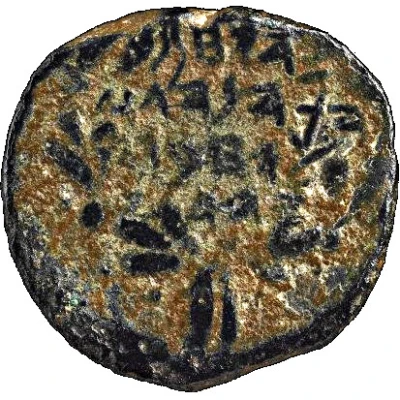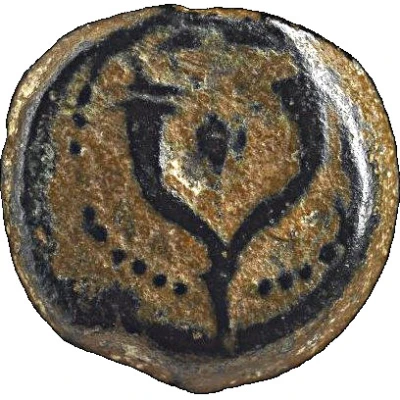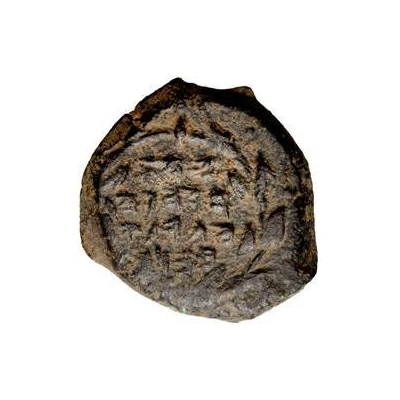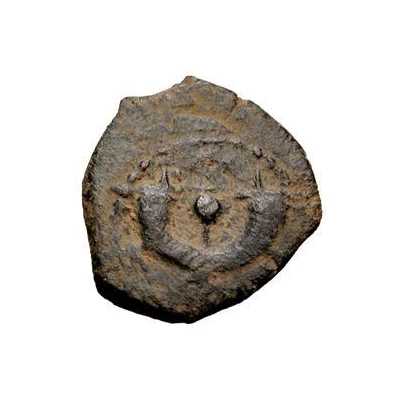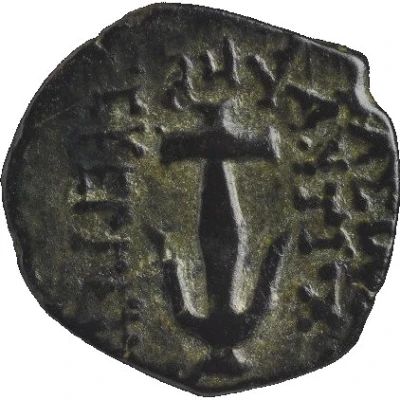
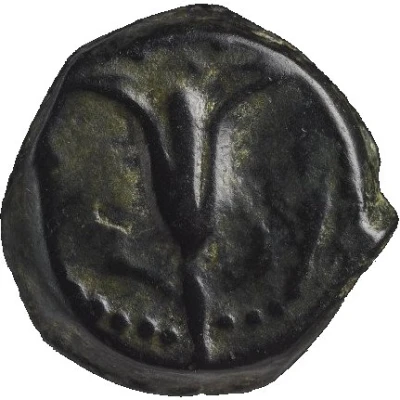

© British Museum
Prutah - John Hyrcanus I and Antiochus VII Sidetes 132 BC - 130 BC
| Bronze | 3.52 g | - |
| Issuer | Judea |
|---|---|
| Ruling authority | John Hyrcanus I (134 BC - 104 BC) |
| King | Antiochus VII Sidetes (138 BC - 129 BC) |
| Type | Standard circulation coin |
| Years | 132 BC - 130 BC |
| Value | 1 Prutah |
| Currency | Prutah (140 BC-95 AD) |
| Composition | Bronze |
| Weight | 3.52 g |
| Shape | Round (irregular) |
| Technique | Hammered |
| Demonetized | Yes |
| Updated | 2024-10-10 |
| Numista | N#72629 |
|---|---|
| Rarity index | 86% |
Reverse
A lily flower as a representation of Jerusalem
Comment
John Hyrcanus I who is the nephew of the famous Judah Maccabee (the hero of the Hanukkah story) came to power as the Heigh Priest of Jerusalem in the year 134 BCE. During his first year in power he was faced with an invasion of Judea and a siege on Jerusalem by the Seleucid King Antiochus VII Sidetes. The siege lasted for over a year. Eventually Hyrcanus agreed on a truce that meant the walls of the city would be torn down, 3,000 talents of silver will by paid to Antiochus, once again Judean recognition of Seleucid control and many other things that impacted the Ancient Judeans. But another thing that was agreed upon in the treaty was that Hyrcanus could strike bronze coins at the Jerusalem Mint but in the name of Antiochus. Hence the creation of the coin above. This coin is also the first known time that a prutah was issued making this the vary first prutah in known history.Interesting fact
The Prutah coin , which features John Hyrcanus I and Antiochus VII Sidetes, is significant because it represents a rare instance of cooperation between the Jewish Hasmonean dynasty and the Seleucid Empire. Despite their historical conflicts, the two powers came together to mint this coin, which was used in both Judea and Syria. This collaboration reflects the complex political dynamics of the region during that time period.
